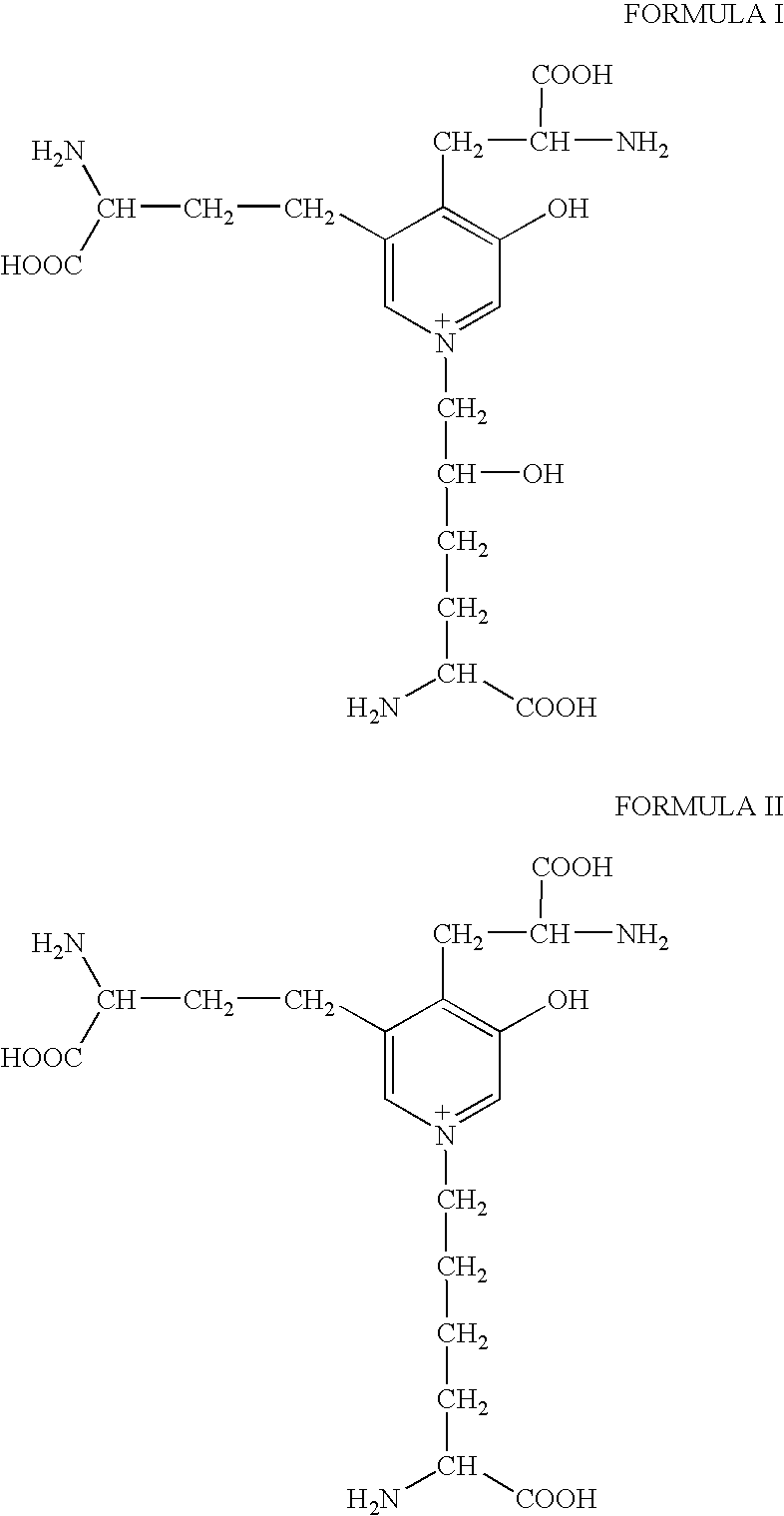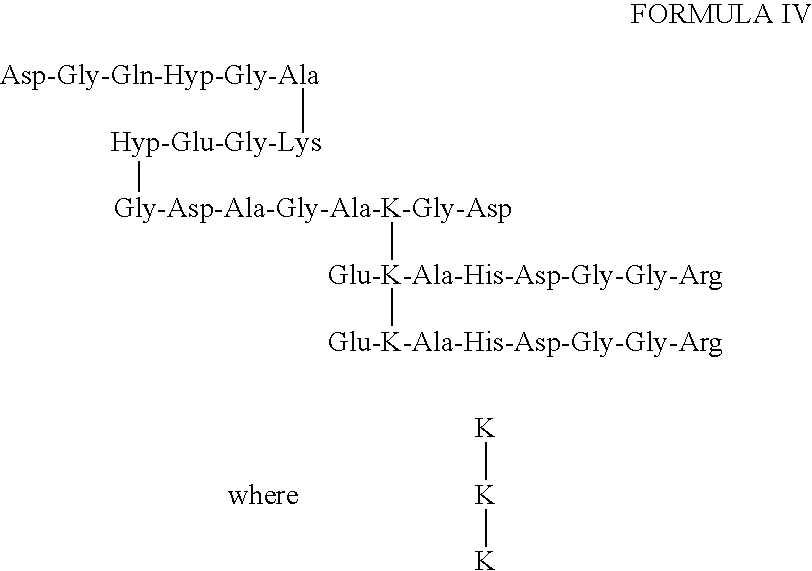Uses of synthetic peptides corresponding to telopeptide sequences of cross-linked type I collagen metabolites
- Summary
- Abstract
- Description
- Claims
- Application Information
AI Technical Summary
Benefits of technology
Problems solved by technology
Method used
Image
Examples
Embodiment Construction
Type II Collagen Telopeptides
[0064]The core peptide structure of the type II collagen peptides may be found in body fluids as a component of larger peptides that bear additional amino acids or amino acid sequences on one or more ends of the three peptide sequences joined by the HP residue. FIG. 1 shows how type II collagen telopeptides, which are linked to a triple-helical sequence, may be produced in vivo from a human source using the proteolytic enzymes pepsin and trypsin. Smaller fragments that have lost amino acids from the core peptide structure, particularly from the helical sequence, may also occur in body fluids. Generally, additions or deletions of amino acids from the core peptide structure will involve from 1 to about 3 amino acids. Additional amino acids will generally be determined by the type II collagen telopeptide sequence that occurs naturally in vivo. As examples, peptides having the following structure:
can be isolated chromatographically from urine, and another o...
PUM
| Property | Measurement | Unit |
|---|---|---|
| pH | aaaaa | aaaaa |
| volume | aaaaa | aaaaa |
| pH | aaaaa | aaaaa |
Abstract
Description
Claims
Application Information
 Login to View More
Login to View More - R&D
- Intellectual Property
- Life Sciences
- Materials
- Tech Scout
- Unparalleled Data Quality
- Higher Quality Content
- 60% Fewer Hallucinations
Browse by: Latest US Patents, China's latest patents, Technical Efficacy Thesaurus, Application Domain, Technology Topic, Popular Technical Reports.
© 2025 PatSnap. All rights reserved.Legal|Privacy policy|Modern Slavery Act Transparency Statement|Sitemap|About US| Contact US: help@patsnap.com



